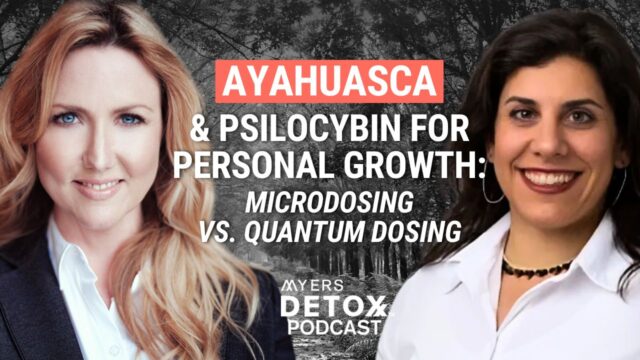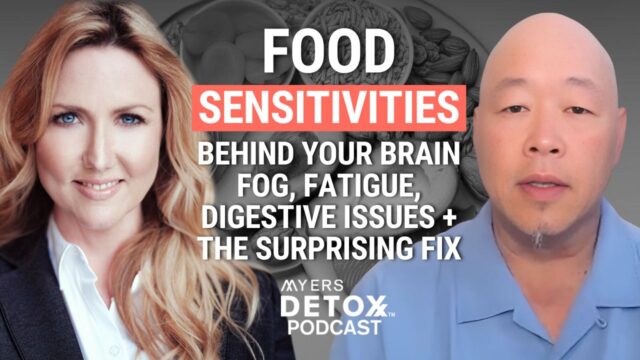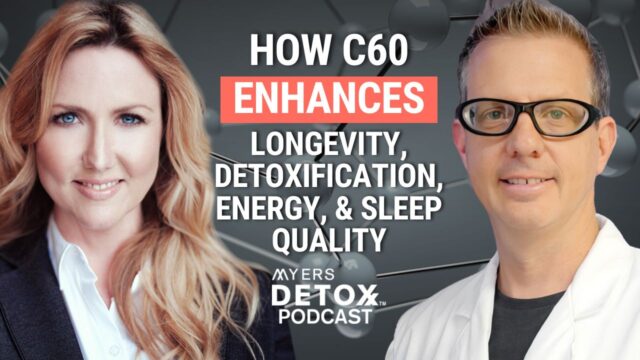Let’s talk about pyroluria.
Research shows that over 40 million adults in the US have some type of anxiety disorder. This is a staggering number, accounting for around 19% of the US population. Even more disturbing is the data that shows around 7% of children experience issues with anxiety each year[1].
What’s driving all of this stress and anxiety? Likely a combination of several factors, including environment, nutrition, and lack of coping skills. However, there may be a much more significant factor at play that’s pushing the trends towards emotional disturbance: early-life stressors. It’s a condition called pyroluria.
In this article, you’ll learn:
- What early life stressors are
- How these stressors and traumas impact your biology
- What pyrroles are and how they produce devastating outcomes in your body
- The key to resolving stress, trauma, and pyroluria
What Is Early Life Stress?
As an adult, you likely deal with your fair share of stressors. Perhaps, by now, you’ve come up with some great coping techniques that keep you balanced, but you likely wouldn’t be able to say the same for your child self.
Early life stress can come in many different forms, the most severe being known as “ACES,” or Adverse Childhood Experiences.
When a child experiences a significant trauma, it goes under the ACES category. Examples of ACES include sexual abuse, physical abuse, neglect, caregiver mental illness, and household violence.
When a child experiences ACES (especially more than once), it can change the neural architecture of their brain – tipping them into a state of “fight or flight” more often than “rest and digest.” As a result, adults who have experienced ACES as children are more susceptible to illness and often have a harder time with emotional regulation.
This leads to a buildup of “toxic stress” in the body. Toxic stress, a term coined by the National Scientific Council on the Developing Child, refers to the effects of excessive activation of stress response systems on a child’s developing brain, immune system, metabolic regulatory systems, and cardiovascular system[2].
While ACES accounts for the major “big T” traumas, many people walk around with remnants of early life stressors that may fit more into the “little t” trauma category.
For instance, having any type of insecure attachment to your caregivers can result in trauma. If your parents were avoidant or anxiously attached, it would set you up for insecure attachment as an adult. This is a stressor that will follow you through life until you do the inner work of healing your attachment style.
Other traumas could include not doing well in school, having a hypercritical parent, experiencing an illness at a young age, or any other experience that left you feeling unsafe or not good enough.
The problem with these early life stressors is that a young child’s brain is incredibly malleable. Just like a sponge, children pick up everything around them. When the environment is loving and calm, their brain becomes loving and calm. Conversely, if the environment is unsafe or unloving, the brain becomes hyper-aware of unsafe and unloving environments.
Stress and Pyroluria
Many in the functional medical community are unaware that one of the side effects of early life stress is a condition known as pyroluria. Pyroluria occurs when a compound called hydroxyhemopyrrolin-2-one (HPL) builds up in your body. HPL (also known as pyrroles) are a waste product of hemoglobin, and when this waste product occurs in large amounts, it can bind to zinc, vitamin b6, and magnesium – inhibiting the use of these vital nutrients[3].
To give you a brief idea of how devastating this can be, here are just a handful of processes that these nutrients are involved in[4][5][6][7]:
Vitamin B6
- Synthesis of neurotransmitters including, serotonin, dopamine, and GABA.
- Metabolism of protein, fat, and carbohydrate
- Cognitive development
- Hemoglobin formation
- Lymphocyte production
- Regulation of estrogen
Zinc
- Immune function
- Protein synthesis
- DNA synthesis
- Cell division (growth and development)
Magnesium
- Muscle and nerve function
- Protein synthesis
- Blood sugar control
- Synthesis of DNA and RNA
- Synthesis of antioxidants
As you can imagine, having a deficiency in these three nutrients can create a range of health concerns. However, the most obvious symptoms often impact mental health. In fact, it’s theorized that excessive pyrroles may play a role in some cases of depression, anxiety, bipolar disorder, and schizophrenia.
Why the mental component?
With low levels of neurotransmitters like dopamine, serotonin GABA, and melatonin, you can expect depression, anxiety, and restless sleep. Furthermore, since vitamin b6 plays a crucial role in protein metabolism, amino acids that can help to calm your mind, like taurine and glycine, may also become deficient. And finally, when estrogen is thrown off balance, it can further disrupt mood regulation[8][9][10][11].
The result is an anxious, on-edge, unhappy person that’s just trying to make it through the day.
Symptoms of Pyroluria
Some common symptoms of pyroluria include:
Emotional:
- Irritability
- Anxiety
- Significant shifts in mood
- Depression
- Memory issues
- Sensitive to noise
- Short temper
Physical:
- Allergies
- Leaky gut
- Premature graying
- White spots on nails
- Constipation
- Diarrhea
- IBS
- Joint pain
Emotional Detox For Pyroluria
While there are certainly nutritional steps you can take to manage pyroluria, going at it solely from a physical perspective is kind of like playing a game of whack a mole. You may get your B6, zinc, and magnesium up, but if you’re still running around in a stress response, you’ll keep depleting those nutrients repeatedly.
That’s why I suggest an Emotional Detox for anyone experiencing symptoms of pyroluria.
If you want to get to the root of your health problems, you must deal with the emotional issues from your past that you’re still carrying with you. Once your nervous system is calm, all other systems in your body can start to work more fluidly because the energy is no longer being funneled to a fight or flight response.
Now when I say “emotional detox,” you may think that’s a pretty broad term, so let me explain:
An Emotional Detox isn’t just about venting to a friend, eating a pint of ice cream, and moving on. My concept of an emotional detox goes much further than just “letting it out.” In fact, I’ve spent over 15 years researching different ways to remove trauma from the body, and I’ve come up with a protocol that encompasses all aspects of your being – mind, body, and energy.
I call it the Emotional Detox Program.
In this course, I walk you through the process of releasing old programs and toxic emotions through emotional/mental practices, physical practices, and energetic practices. By addressing all three systems, you are sure to get to the root of your traumas and release them for good.
Takeaway
If only we had a magic wand and could go back and rewrite our childhoods, I’m sure many of us would press the delete button on quite a few memories. However, the fact that the magic wand doesn’t exist does not mean you’re powerless to rewrite your past. You may not be able to “delete” your memories, but you can certainly reprogram your mind and energy to respond to life in a more optimistic way.
That’s the goal of my Emotional Detox Program; I want you to be able to take control of your emotional state and become the most empowered version of you that’s possible.
To learn more, check out my Emotional Detox Program today to start your healing journey back to wholeness. You can sign up for this Emotional Detox Masterclass to learn more.
*These statements have not been reviewed by the FDA. The Emotional Detox Program is not intended to diagnose, treat, cure, or prevent any disease. It is not intended to replace any medication or healing modality prescribed by your medical doctor.











